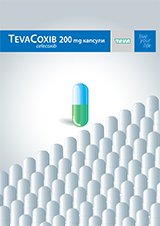Biotechnological Equipment
Advanced search
Article
Biotechnology & Biotechnological Equipment 18 (2), 177 - 184 (2004)
Application of procalcitonin (PCT) - Q test for early detection of bacteremia and sepsis
R. Vatcheva-Dobrevsky1, K. Ramshev2
- Military Medical Academy, Department Microbiology and Virology 1601 Sofia, Bulgaria
- Military Medical Academy, Department Intensive Care Unit 1601 Sofia, Bulgaria
Abstract
The aim of this study is to evaluate the clinical application of PCT-Q test for determination procalcitonin (PCT) serum level in patients with suspected sepsis.
Fifty six patients according the criteria for sepsis (ACCP/SCCM,1992) and 19 controls were included. All patients undergo the bloodculture. Body temperature, leukocyte count, C-reactive protein (CRP) and procalcitonin were determined the same day. We used commercial solid-phase immunoassay B.R.A.H.M.S. PCT-Q (B.R.A.H.M.S.-Diagnostica GmbH, Henningsdorf,Germany) for semi-quantitative and rapid measurement of PCT.
Predominant causes of sepsis were infections of lower respiratory tract, surgical interventions, polytrauma. The data shows in 73,6% association with bacteremia and abnormally elevated PCT serum level. The results of extremely high PCT level was obtained for 28 (50%) of patients The 17,8% of patients , clinically suspected for sepsis, has high level of PCT, but negative bloodcultures. It was found 8 (14,2%) cases with low PCT level and positive blood cultures. The routine laboratory parameters and physical examination in many cases fail to establish the diagnosis of sepsis . PCT is more specific and sensitive marker of systemic bacterial infections then acute phase protein CRP.
The PCT-Q test is ease to use and its quick, validity results are important support for diagnosis of sepsis in early phase. In this way improved the diagnosis, monitoring and therapy of patients in risk.


